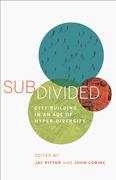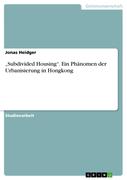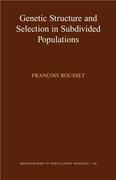28 Results for : subdivided
-

Roman Hispania: The History of Ancient Rome’s Conquest of Spain and the Iberian Peninsula , Hörbuch, Digital, ungekürzt, 107min
Spain’s geographical position has made it a focus of attention throughout history for numerous migrants, traders, colonizers, and conquerors alike. Iberia, also known as Hispaniola or Hispania, is in the southwestern corner of Europe and is separated from Africa by a mere eight miles, the point at which the Mediterranean meets the Atlantic. The whole of the Iberian Peninsula, which today incorporates the modern nation states of Spain and Portugal, was known to the Romans and Greeks as Hispania. Over the centuries, before Roman involvement in the Iberian Peninsula, it had been settled by different waves of eastern tribes: Celts, Phoenicians, Greeks, Africans, and Carthaginians. It was the settlement in the south of Spain by the last of these that led to Roman interest in the area and ultimately to its conquest and integration into the Roman Empire, though the complete process was to take more than 200 years. Once the Carthaginian territories had been taken, those parts of Hispania became the two provinces of Hispania Citerior and Hispania Ulterior, which in turn were later subdivided into further provinces. They became some of the wealthiest and most Romanized of the empire’s provinces, but the process by which the whole of Spain came under Roman rule was both violent and complex. Given that the Iberian Peninsula is Europe’s second largest peninsula, maintaining control required vigorous efforts, including Roman-sponsored migrations by the Sueves, Alani, Vandals, Visigoths, and other tribes. For example, the Visigoths first set foot on the peninsula in the year 416, where they were tasked with forcefully re-instituting Roman authority upon other Germanic invaders who had occupied the land. Initially, the Visigoths followed instructions to a tee, but as time progressed, it appeared there may have been reason to have been suspicious of the Visigoths after all. In 418, they were relocated to France, where they established a makeshift kingdom of thei ungekürzt. Language: English. Narrator: Colin Fluxman. Audio sample: https://samples.audible.de/bk/acx0/116408/bk_acx0_116408_sample.mp3. Digital audiobook in aax.- Shop: Audible
- Price: 9.95 EUR excl. shipping
-

Neuroscience for Dentistry
A practical, reader-friendly guide for dental students on the neuroscience of the orofacial region Understanding neural mechanisms that control orofacial pain, proper masticatory function, taste, speech, swallowing, and proprioceptive input to the temporomandibular joint and teeth is an important facet of dentistry. Neuroscience of Dentistry by renowned educators Barbara J. O'Kane and Laura C. Barritt provides foundational knowledge on these topics. The text integrates fundamental concepts of general neuroscience with vital information on neural mechanisms of the orofacial region and associated pain pathways. The book is organized in two parts covering basic neuroscience and orofacial neuroscience. Part one is subdivided into four units on the central nervous system, brain and spinal cord gross anatomy, sensory systems, and motor systems. Part two features three units focused on orofacial structures and tissues, dental structures, and orofacial pain and anesthesia. Each generously illustrated, succinctly written, and consistently formatted chapter includes an introductory overview and learning objectives.Key Highlights- Throughout the book, relevant clinical correlations emphasize the relationship between basic neuroscience and clinical practice- Concise, high-yield illustrations, schematics, charts, and tables enhance understanding of general and orofacial neuroanatomy concepts - Helpful overviews at the beginning of each chapter highlight key concepts- National board style questions at the end of each chapter emphasize board-relevant information that enables self-studyThis is a must-have resource for dental students taking neuroscience during their first or second year of dental school. It will also benefit other health science and dental hygiene students, as well as oral and maxillofacial surgery residents. This book includes complimentary access to a digital copy on https://medone.thieme.com.- Shop: buecher
- Price: 77.10 EUR excl. shipping
-

Summa Theologica Part I (Prima Pars) , Hörbuch, Digital, ungekürzt, 3177min
The Summa Theologica, by Thomas Aquinas, is a fundamental text in Catholic doctrine, a compendium of theology that has been studied and debated since its first publication in the 13th century. Furthermore, it has been widely regarded as one of the classics of Western philosophy, not least because, perhaps for the first time in such a systematic manner, it set out to consider the views of non-Christian figures such as Aristotle, Boethius, Muslim writers including Averroes (Ibn Rushd) and Avicenna (Ibn Sina) and the Sephardic Jewish scholar Maimonides. The work proved a major influence on Dante when he came to write the Divine Comedy and continues to be studied in most of the major Christian traditions. Thomas Aquinas (1225-1274), an Italian-born Dominican Friar, wrote the Summa Theologica between 1265 and 1274 - it was unfinished at his death. He set out to provide a basic introduction to students, but the scope and detail goes far further than that. It is a huge work, approaching two million words in total. It is divided formally into three parts, though the third was completed after his death by incorporating earlier writings. The three main sections are generally further subdivided, and this is reflected in the Ukemi recording. This opening recording contains the First Part (Prima Pars). It will be followed by Second Part (Prima Secundae - the first part of Part II); then Second Part (Secundae Secundae - the second part of Part II); and finally Part III. Aquinas ordered his work in a clear and regular pattern. He starts with a Question, divides the Question into a number of ‘Articles’, and within each Article he enters into a debate, offering Objections and Replies to the Objections. Part I (Prima Pars) has 119 Questions and 584 Articles and is essentially devoted to God’s existence and nature. The first Question is ‘The Nature and Extent of Sacred Doctrine’. The second Question (widely read and discussed) is ‘The Existence of God’, ungekürzt. Language: English. Narrator: Martyn Swain. Audio sample: https://samples.audible.de/bk/dhrm/000273/bk_dhrm_000273_sample.mp3. Digital audiobook in aax.- Shop: Audible
- Price: 9.95 EUR excl. shipping
-

Economics of Scale , Hörbuch, Digital, ungekürzt, 42min
The beginning of this economic concept, economies of the scale, can be dated back to Adam Smith, who was a Scottish pioneer of political economy and an important key figure during the Scottish Enlightenment Era. Smith first mentioned this concept in his book Wealth of Nations in 1776, which was based on the idea of obtaining greater production return profits through the use of division of labor. The economies of the scale rely on the fixed cost that are uniform and do not vary with any of the alterations in output processes or variable costs, which may undergo changes due to change in the amount of output. Other sources of the economies of scale are production, managerial, technological, financial, and marketing. The economies of scale tend to have a significant effect on the production costs of the material. The economies of scale reduce the per unit fixed cost of the product and with increased production the fixed cost of the product expands over the entire output at a greater rate than before. The economies of scale are also responsible for bringing down the per unit cost value of the product. This occurs due to the expansion of production scale, which as a result improves the efficiency of the production processes. The economies of scale are cost-advantageous and the working of business takes place through exploitation of expanding scale of production. There are broadly two main types of economies of scale: internal and external economies of scale, which are further subdivided into various types. In simple terms, diseconomies of scale can be understood as the opposite condition of economies of scale. It is a condition that arises when economies of scale fail to function within the firm and when there is an increase in the value of costs per unit. The basic fundamental concept of economies of scale is the less the quantity of produce, the greater the per unit fixed cost of the product. The diseconomy of scale generates in the ungekürzt. Language: English. Narrator: Andrea Giordani. Audio sample: https://samples.audible.de/bk/acx0/129031/bk_acx0_129031_sample.mp3. Digital audiobook in aax.- Shop: Audible
- Price: 9.95 EUR excl. shipping
-

Subdivided
Subdivided - City-Building in an Age of Hyper-Diversity: ab 14.99 €- Shop: ebook.de
- Price: 14.99 EUR excl. shipping
-

Subdivided Housing. Ein Phänomen der Urbanisierung in Hongkong
Subdivided Housing. Ein Phänomen der Urbanisierung in Hongkong - 1. Auflage: ab 12.99 €- Shop: ebook.de
- Price: 12.99 EUR excl. shipping
-

Genetic Structure and Selection in Subdivided Populations (MPB-40)
Genetic Structure and Selection in Subdivided Populations (MPB-40): ab 101.99 €- Shop: ebook.de
- Price: 101.99 EUR excl. shipping
-
Keyboard Music of Girolamo Frescobaldi
Girolamo Frescobaldi (1583-1643) is considered one of the founding fathers of solo Italian keyboard music. By the age of 14, he was somewhat of a child prodigy and was listed in 1597 as organist of the Ferrarese Accademia della Morte as successor to Ercole Pasquini. His teacher was the famous Luzzasco Luzzaschi, then ducal organist and composer under Alfonso II d'Este. By age 25, Frescobaldi embarked on what was to be a lifetime career in Rome when he was appointed organist at St. Peter's Basilica. Thousands of people were reported to have witnessed his first performance. Like many musicians today, Frescobaldi often held several jobs at once: freelancing in Rome and teaching harpsichord and organ to many students, most notably to the family members of Enzo Bentivoglio, the noble household in which he was in service. In 1613, Bentivoglio said "Sr. Girolamo came here, but now he does not come here at all ... The poor man is half crazy as it seems to me." Between 1610-13 Frescobaldi entered into the service of Cardinal Pietro Aldobrandini. Aside from a brief visit back to Mantua, he remained there until his move to Florence (1628-34), where he was employed at the Medici court as one of it's most highly paid musicians. He returned to Rome in 1634 under the patronage of Pope Urban VIII and remained there until his death in 1643. Throughout his life, Frescobaldi enjoyed sophisticated patronage and was praised by well-known musicians and theorists, such as Adriano Banchieri and Marin Mersenne, among others. As a continuo player, he played with the famous castrati Loreto Vittori and Marc Antonio Pasqualini, and he performed in the Lenten services at the Oratorio del Crocifisso. His musical output showed an overwhelmingly large focus on keyboard music. He achieved a reputation not only for his compositional talents but also for his brilliant improvisatory skills, virtuoso playing, contrapuntal mastery, and general inventiveness. Frescobaldi was both influenced by and influential upon the seconda pratica, known chiefly for it's renewal of ancient rhetoric and oratory through music. Composers of this "nuova maniera," such as Claudio Monteverdi, Giulio Caccini, Jacopo Peri, and Sigismondo D'India, advocated the clear delivery of text through the use of declamatory rhythms, expressive dissonances, startling chromatic lines, and shocking contrasts of rhythm and harmony. Frescobaldi's keyboard works exemplify this vocal practice. In particular, we see this type of prosaic freedom in his toccatas. In many ways, they reveal a musical narrative without a text, a kind of instrumental recitative. He compared the performances of these pieces to a modern madrigal, playing "now languidly, now quickly, sustaining it according to feelings and words." Plentiful are the dramatic mood changes, sudden cadential flourishes, and spicy harmonic surprises. From one measure to the next, he shifts from free passagework to more rhythmical, imitative writing. In the foreword to Book I of his Toccata e partite d'intavolatura di cimbalo et organo, published in 1615 and later expanded in 1637, he tells us: "Li cominciamenti delle toccate sieno fatte adagio, et arpeggiando è così nelle ligature o vero durezze, come anche nel mezzo del opera si batteranno insieme, per non lasciar voto l'istromento, il qual battimento ripiglierassi à beneplacito di chi suona." The beginnings of the toccatas should be played adagio and arpeggiated. The same applies to the suspensions [or held chords] or dissonances, which also in the middle of the piece are to be played together in order not to leave the instrument empty [i.e., not to let the sound die away]. Reiterating the notes may be repeated at the player's discretion. The term adasio (adagio) also appears in Frescobaldi's Fiori musicali (1635). The word suggests playing at ease and freely, in a more prose-like manner than in other more metrical sections. As he instructs the performer to be flexible with the tempos within the toccatas, he also advises the player to choose broad tempos for expressive passages and in runs, to play slowly and arpeggiated in the opening chords, and to pause at the ends of trills, runs, or when the mood deems appropriate. When playing sixteenth notes with both hands, he tells us to pause on the preceding note, even if it is a short note, and "then play the passage resolutely in order to show off the agility of the hands." Above all, he remarks that one should use good taste and judgment. More straightforward in form are Frescobaldi's canzonas and capriccios. Although they are somewhat similar in their sectional structure and multiple meter changes, their origins differ. The baroque canzona was an instrumental piece of music derived from the vocal chanson, described by Michael Praetorius in his Syntagma musicum (iii, p.19) as a series of short fugues for approximately four to eight parts (instruments). Many examples of the solo canzona were arrangements of polyphonic vocal works, including elaborated transcriptions of chansons, such as those by Andrea Gabrieli. Tarquinio Merulo was one of the first to write a canzona not based on vocal models but on other ensemble pieces. Vincenzo Pellegrini wrote canzonas for keyboard that were sectional with contrasting speeds and meters, although the sections were not always based on the same material. Ascanio Mayone and Giovanni Maria Trabaci were more influential upon motif-based canzonas, issuing the term "variation canzona." Frescobaldi's canzonas lean towards this variation technique. Capriccios, like the canzona model, are lengthy compositions that are subdivided into contrasting sections, often juxtaposing passages in the fantastical style of the toccata with dance-like rhythms in major keys. From Frescobaldi's own advice preceding the Capricci, we learn that, "One must commence with the beginnings slowly in order to give great spirit and beauty to the following passages, and, in the cadences, sustain them before the next passage begins, in triple and sesquialtera meters, if in a major key, they should be played adagio, and, if in minor, more quickly, if there are three quarter-notes, play them even quicker yet, if there are six quarter-notes, they must be given their time by walking the beat rapidly. At certain dissonances, one should stay there and play the chord as an arpeggio so they will be more spirited than the next passage. I say this modestly, for I place myself before the good judgment of scholars." Certain Capricci make use of popular melodies known throughout Italy, such as Bassa Fiamenga and Spagnoletta. Praetorius called the keyboard capriccio a "phantasia subitanea" ("a sudden whim"). He writes, "One takes a subject but deserts it for another whenever it comes into his mind to do so. One can add, take away, digress, turn, and direct the music as one wishes, but while one is not strictly bound by the rules, one ought not go too much out of the mode." These comments are descriptive of Frescobaldi's toccatas as well. In 1624, Frescobaldi said about his own capricci, "In those passages which do not seem to conform to the rules of counterpoint, the player should seek out the affect and the composer's intentions." Frescobaldi's partitas are essays in the art of variations upon popular ground bass or melodic and harmonic patterns, such as Monicha, Ruggiero, Romanesca, and the Chaconne and Passacaglia. Monicha (also monica or monaca) was a popular Italian song from the early 1600s. The opening line laments a young girl forced to become a nun, hence the minor mode and sad quality of the tune. Frescobaldi composed two sets of variations on this theme: Partite sopra l'Aria di Monicha (6 variations in 1615 and 11 in 1637, including some from the earlier set) and a Messa [to be performed during mass] sopra l'Aria della Monica. The Ruggiero, like the Romanesca, was used for dances, instrumental variations, and for singing Italian poetry, especially those with rhyme schemes in ottav- Shop: odax
- Price: 25.44 EUR excl. shipping
